As a lifelong Florida resident, I’ve grown to hate the tourist trap reputation the state has cultivated. When people think of Florida they often conjure up images of plastic-covered beaches or expensive, overcrowded theme parks. While I’ll admit these stereotypes do encompass a portion of the Sunshine State, they are far from the best things the state has to offer. In fact, the natural springs in Florida are perhaps the state’s best-kept secret.
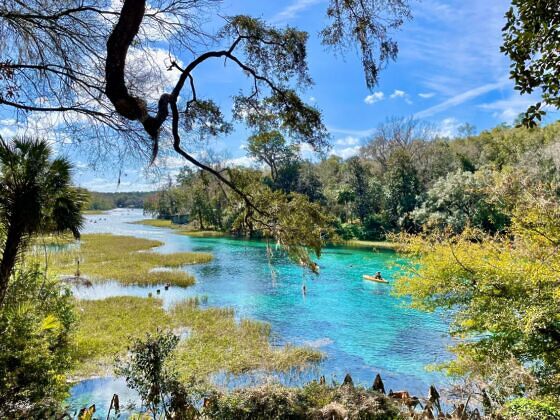

8 Magical Natural Springs in Florida for Pure Rejuvenation and Relaxation
They offer beauty, history, entertainment, and they are all extremely reasonably priced. Also, each spring is totally different, from family-friendly swimming holes and rivers to SCUBA and cave diving, visitors can find the vacation spot that’s perfect for them.
1. Silver Springs, Ocala
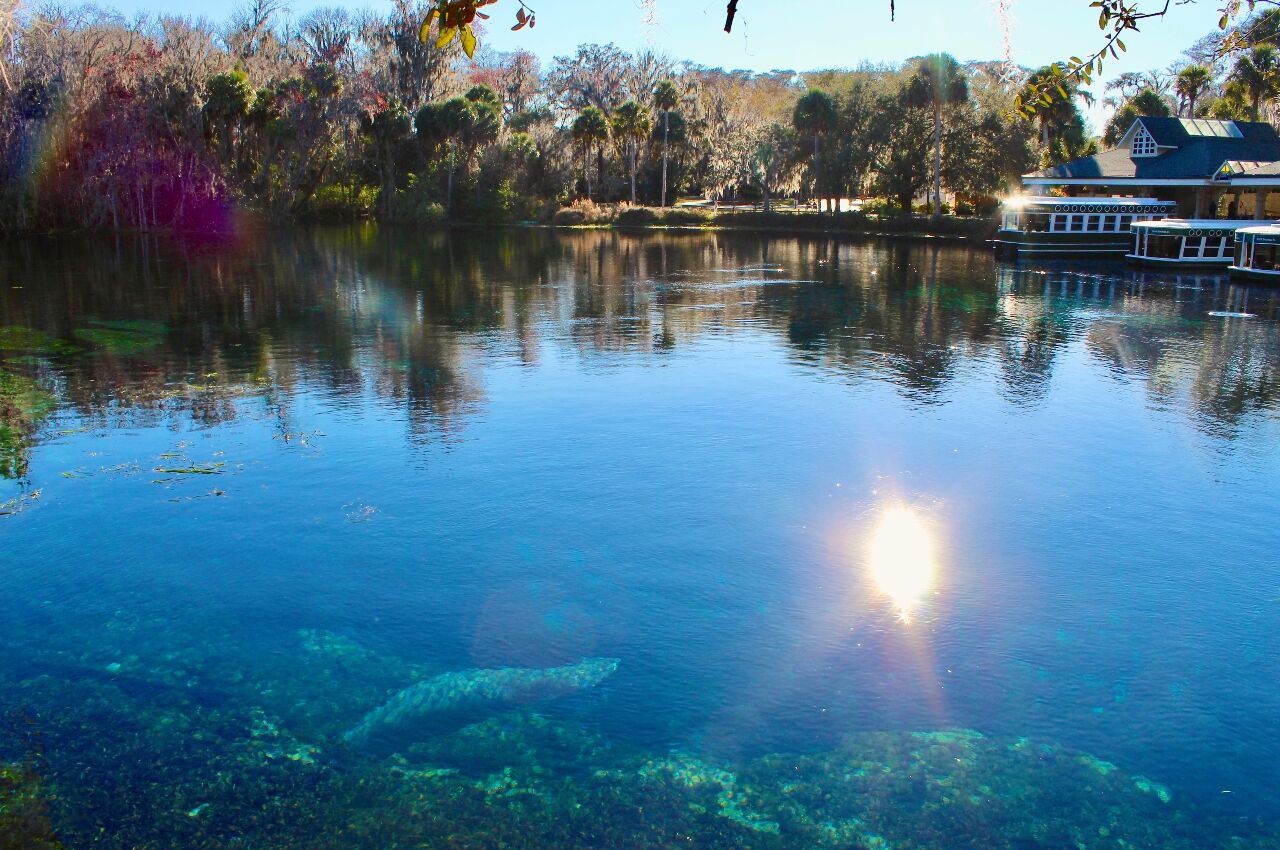
Photo: Blair Carlyle
Silver Springs isn’t only Florida’s oldest spring destination, it’s often recognized as the first tourist attraction in the state.
The famous glass-bottom boat tours began in the late 1870s and still continue today almost 150 years later. The entry fee to the park is only $2, but if you want a ticket to the glass bottom boat the price jumps to $14.84 (which is definitely worth it). On the tour, you’ll see a 600-year-old Native American dugout canoe, a boat that possibly belonged to Spanish conquistadors, and many other incredible sights.
Silver Springs is the largest artesian limestone spring in the world (the sun reflecting off of the limestone is what gives the water its silver sheen, hence the name). As if it couldn’t get any better, there are wild monkeys in the forest surrounding the spring and if you’re lucky you’ll catch a glimpse of them in the trees. The only downside to Silver Springs is there is not a swimming area, but there are kayak rentals on the property for those who still want to get out on the water. The park also offers campgrounds for RVs, tents, along with cabins to rent. Silver Springs is a perfect place for families to learn about Florida history in a spectacular setting without breaking the bank.
2. Juniper Springs, Ocala National Forest
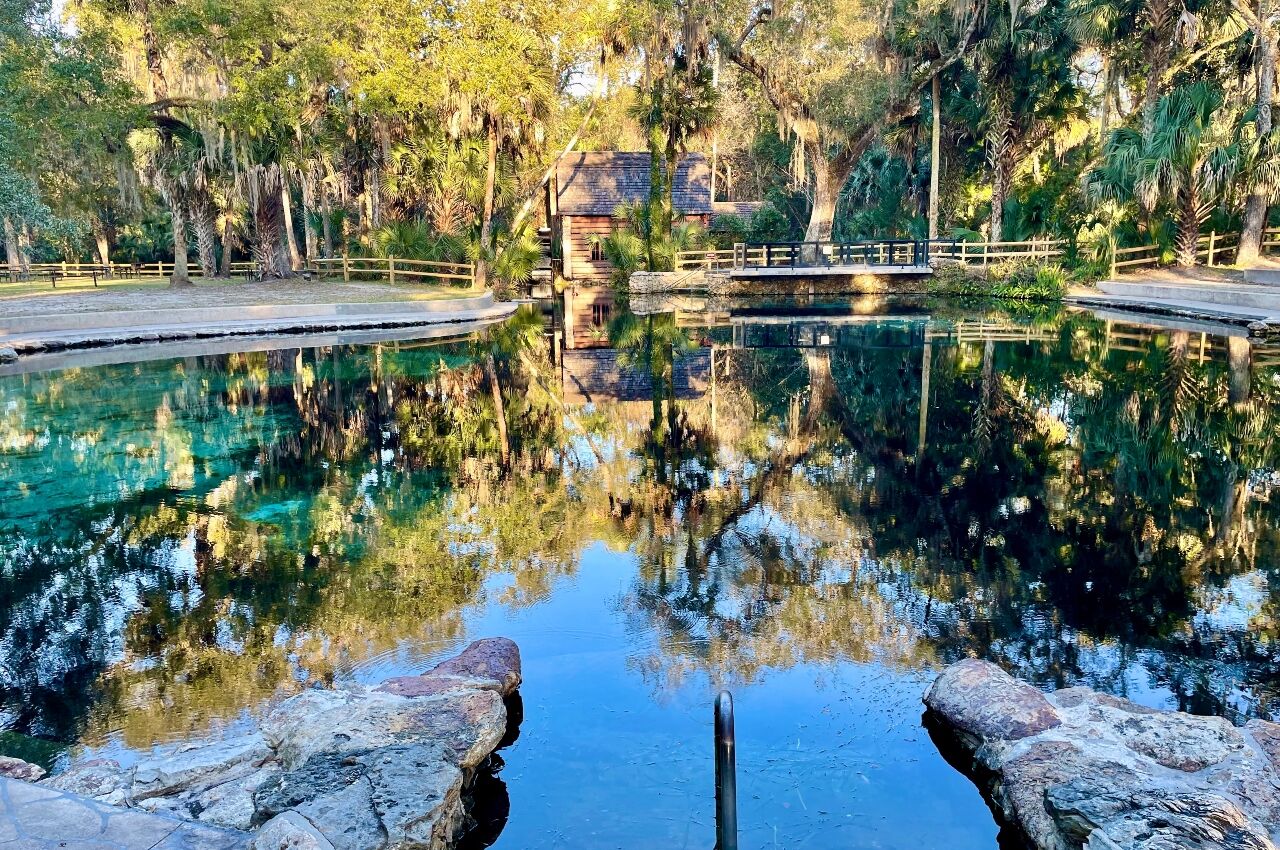
Photo: Blair Carlyle
If I had only one word to describe Juniper Springs the word that comes to mind is magical. The spring itself isn’t very big and can get pretty crowded on weekends, but if you find the right time to go (I opted for mid-afternoon on a Tuesday), you will have a wonderful time in a truly enchanting place.
Constructed in the 1930s by the Civilian Conservation Corps, Juniper Springs has a beautiful swimming area, a campground, a rotating water mill, and a nationally recognized seven-mile canoe and kayak trail. There are remnants of the park’s history scattered all around the grounds, from crumbling chimneys out in the forest to the old stone bridge behind the mill.
The main attraction of Juniper Springs is its canoe trail. Named one of the top 25 canoe runs in the US by ReserveAmerica, the river meanders through old-growth forest under a canopy of live oaks and Spanish moss before opening up into a wetlands area alive with wading birds and wildlife (including rare albino gray squirrel, otters, and American eels). The park charges $8 for day use and $31 for overnight camping.
3. Salt Springs, Ocala National Forest
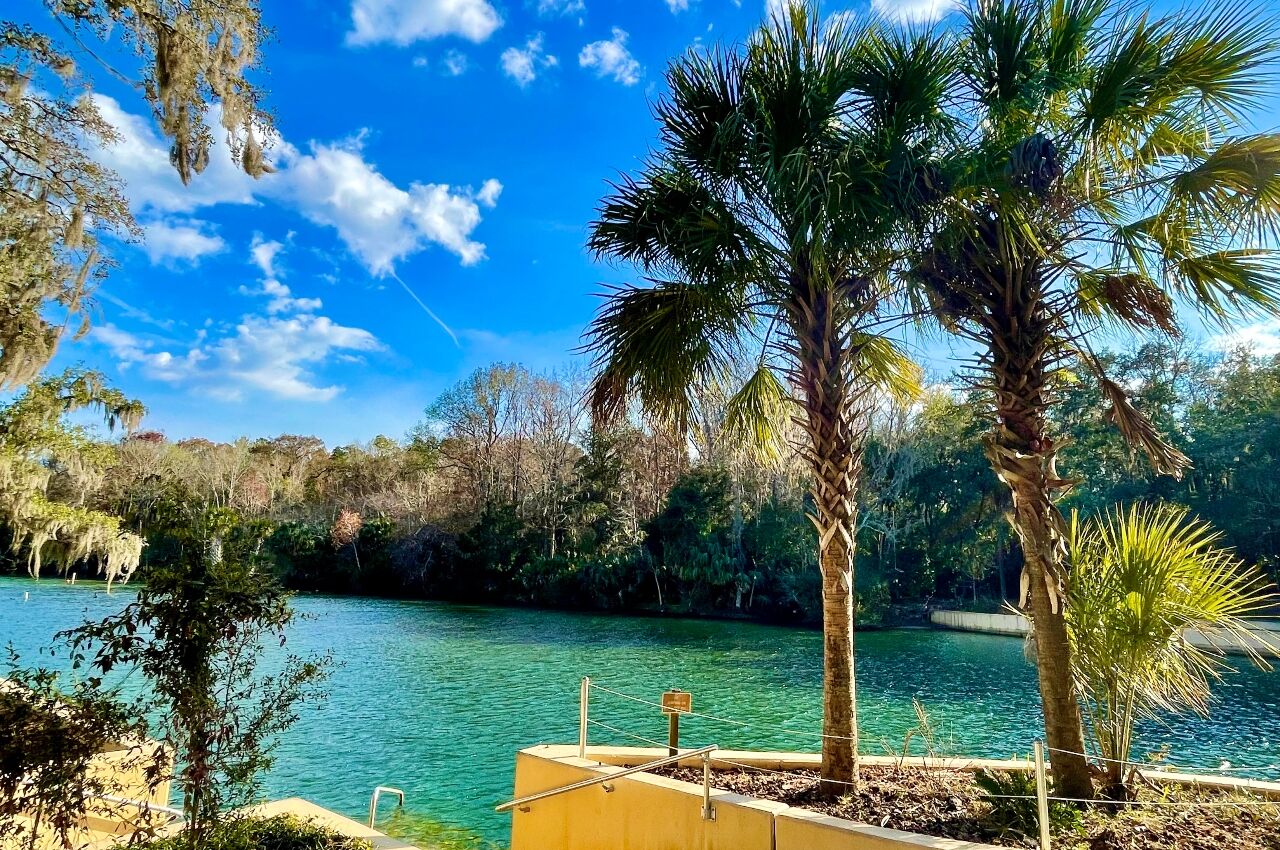
Photo: Blair Carlyle
Salt Springs is located way out in the Ocala National Forest, along with Alexander Springs and Juniper Springs. Salt Springs is not as glamorous as some of its counterparts but it’s still an incredibly pleasant spot for an afternoon or weekend adventure — it’s especially good to know if Juniper and Alexander Springs are overcrowded.
Its primary attraction is the swimming area, which is fed by 52 million gallons of freshwater a day. The minerals in the water give it a slightly salty taste and caused early travelers to believe it had medicinal healing powers. There is a full ground for RV hookup and the park allows consecutive camping for up to two weeks. It costs $8 to enter the park and $23 a night for primitive camping. There’s also a nice two-mile hike that ends in a birdwatching observation deck for those who want to do more than lounge in the sun. Manatees are often seen in the springs so be sure to bring binoculars and a camera!
4. Rainbow Springs, Dunnellon
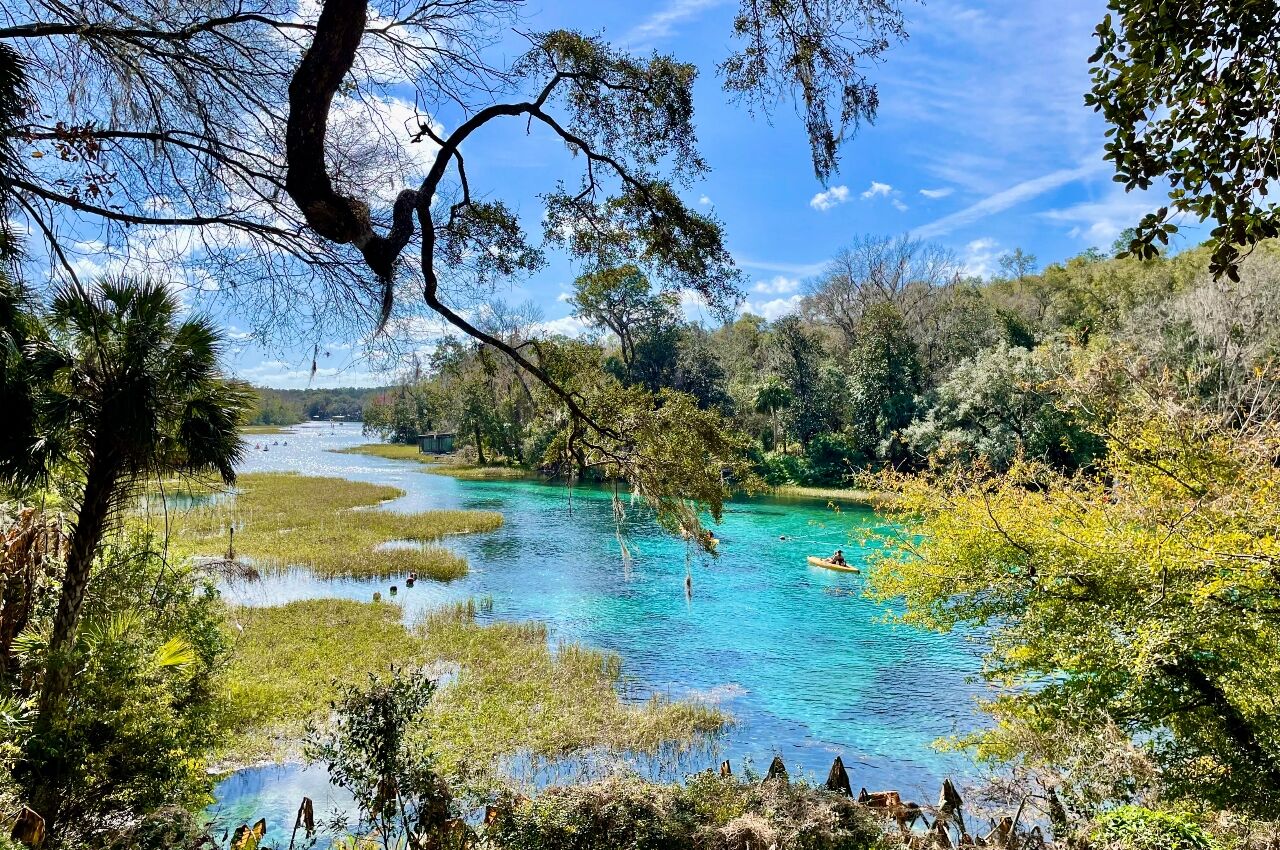
Photo: Blair Carlyle
While each spring in Florida offers something slightly different, Rainbow Springs has it all. A wonderful swimming area, a crystal clear river to kayak on, beautiful hiking trails, a rich history…the list goes on and on.
The spring shimmering beneath the Spanish moss, magnolia trees, and palm fronds conjures the image of the Garden of Eden. In 1889 the property began as a phosphate mine until the mines were exhausted in the mid-1900s. From there it was turned into a “jungle oasis” tourist attraction, with waterfalls being built where the mines once stood and exotic animals imported to draw crowds.
Today, you can still see the remains of the waterfalls, the aviary, and animals cages around the park. There’s also a beautiful swimming area with crystal clear water that stays a steady 72 degrees year-round and stretches east and west to become the Rainbow River.
The park has tubes and kayaks to rent, along with life jackets, snorkeling equipment, and other flotation devices for sale in the gift shop. There are four different trails to hike with distances ranging from the 0.7 mile campground loop to the 3.5 mile White and Yellow Trail. Rainbow Springs offers both RV and tent camping, though be advised to book your spot in advance. The park costs $2 for day use and $23 for overnight tent camping.
5. Ichetucknee Springs, Ichetucknee Springs State Park
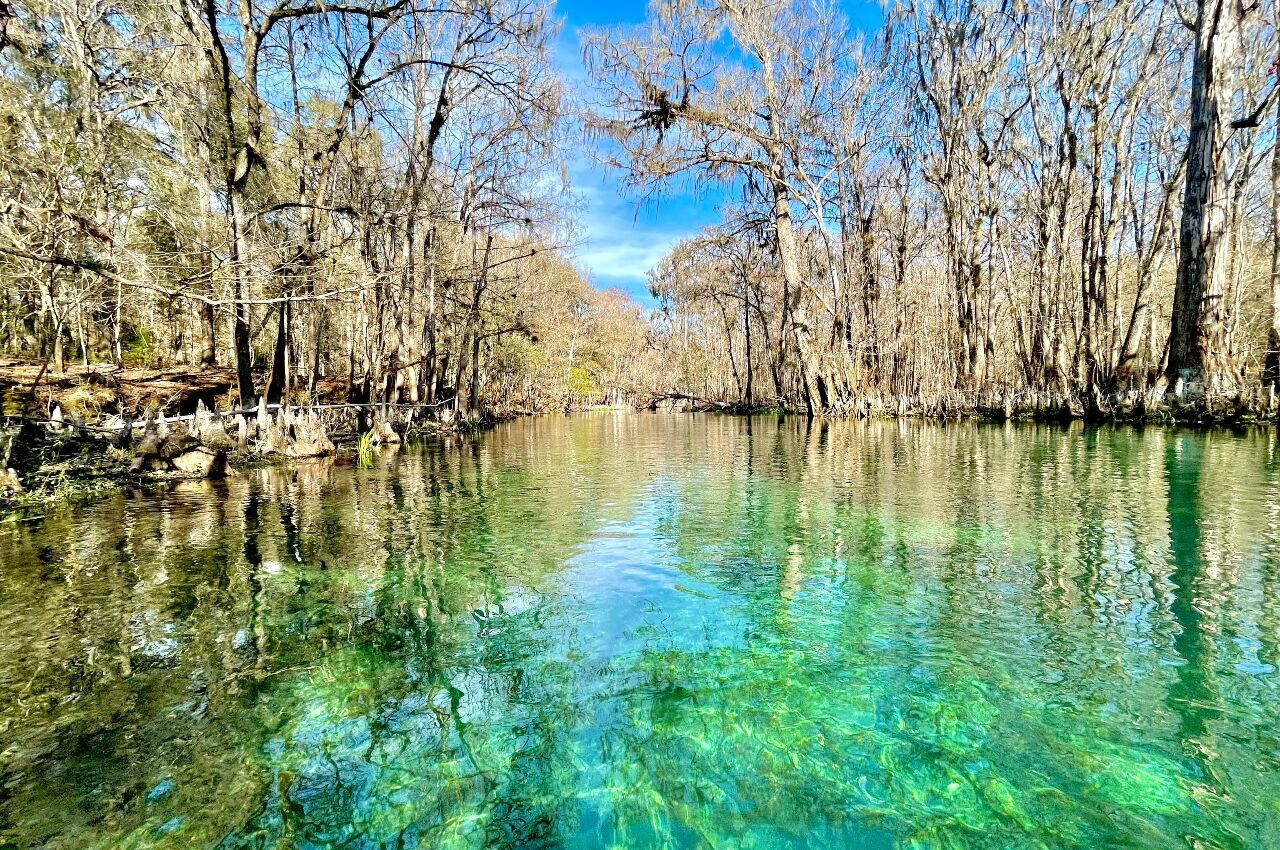
Photo: Blair Carlyle
About an hour north-west of Gainesville lies Ichetucknee Springs State Park. The Ichetucknee is a crystal-clear river that winds through a hauntingly beautiful old growth cypress swamp.
Turtles sun themselves on fallen longs and wading birds patrol the shoreline as visitors meander south on the river’s steady current. Glittering mother-of-pearl shimmers on the bottom of the river as the sun glints off of various freshwater shells and an army of cypress knees stand guard throughout the forest.
The Ichetucknee River is another one of Florida’s incredible spots and is the perfect place to spend a day or a week. The river has various entry points depending on how long you want to be on the water. If you’re tubing you can choose between the midpoint launch (two-hour trip to the last take out), or Dampier’s landing (one hour trip to last take out). If you’re canoeing you can venture up the river to the north section and spend a whole day rowing through the river.
The park costs $6 per vehicle (two to eight people), $4 for single-occupant vehicles, and $2 for pedestrians without vehicles. Tubes are available to rent at the gift shop and there are tram and shuttle services available to take you up and down the river for a small fee as well. The park also has tent and RV camping at $20 a night for a two-person primitive camp spot and $40 a night for AMP RV camping.
6. Devil’s Den, Williston
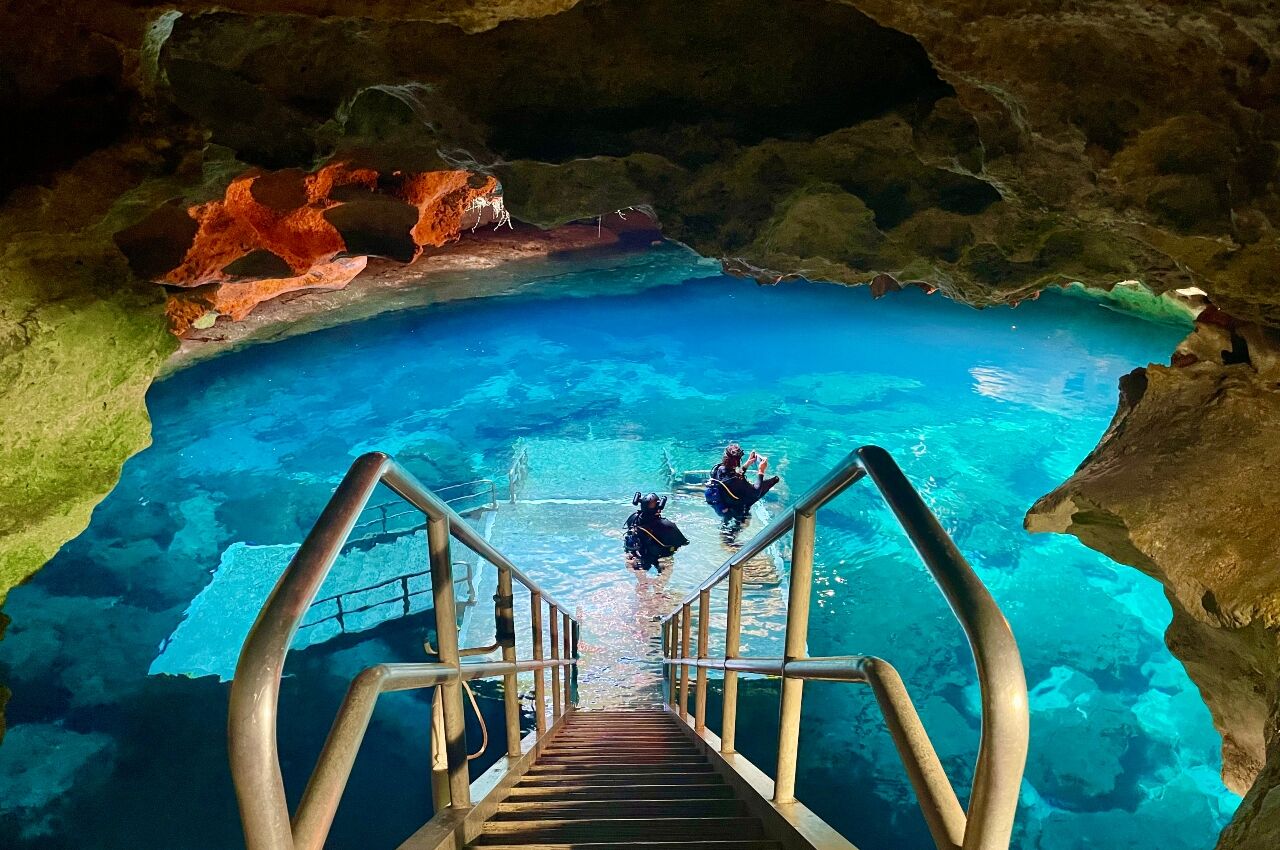
Photo: Blair Carlyle
When you first pull into Devil’s Den, it doesn’t look like much. In fact, it kind of looks like you just pulled into someone’s backyard. But the magic of the spring is underground, where an ancient subterranean spring bubbles at a constant 72 degrees year-round.
Gazing down into the gaping maw of the spring, you’ll be struck by its deep shimmering blue water and prehistoric geology. If you’re SCUBA certified this spring is a must-see. It stretches 54 feet deep and is filled with ancient rock formations and fossils (though the spring kindly asks that if you find anything please leave it be). Keep in mind there is no free swimming allowed in the spring! Snorkeling is by appointment only, but the park is definitely intended for SCUBA divers specifically.
The spring has a swimming pool for non-divers and is less than a mile from the beautiful Cedar Lake Woods and Botanical Gardens for anyone who accompanies a diver and is looking for something to do while their friend explores the den. Admission for divers is $38, and the park has SCUBA supplies for rent on-site ($45 for a the full SCUBA package including mask, snorkel, fins, booties, regulator, BCD, tank, wetsuit, weights, and an LED light). The park also has RV hookups for $35 a night, tent camping for $12, and cabins to rent for $140 per night.
7. Rock Springs, Kelly Park, Apopka
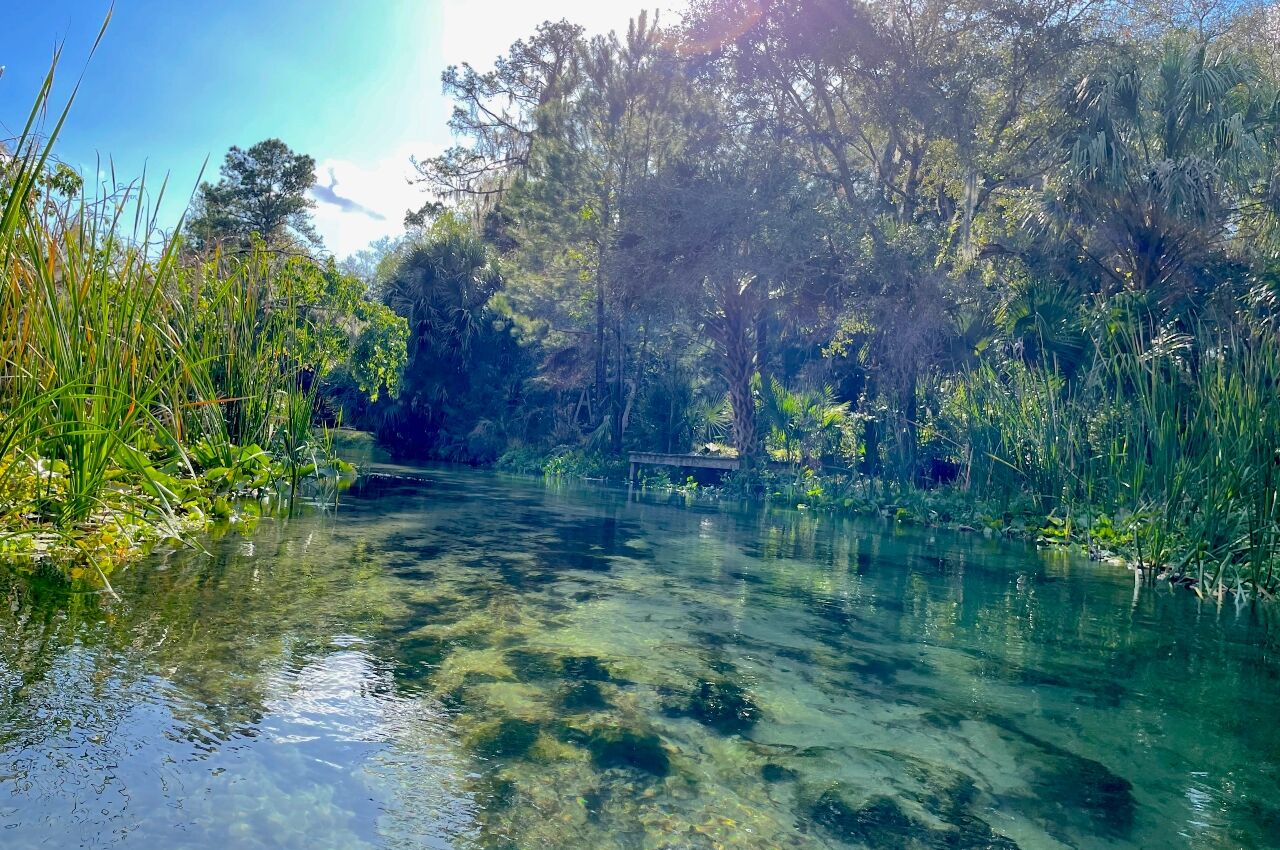
Photo: Blair Carlyle
Whether you want to soak in a swimming area or tube down a lazy river, Rock Springs is the perfect place for an afternoon with the little ones. The park also has an incredibly large recreation area with countless picnic tables and grills to use, along with a playground.
The river is calm and shallow, making it ideal for youngsters who aren’t ready for longer river runs like Ichetucknee or Rainbow River. That said, there is also a more advanced run for kayakers and canoers who want a little more excitement. Tubes are available to rent for $7 at the Rock Springs Bar and Grill. Admission is $3 for one to two people, $5 for three or more, and $10 per bus or commercial van.
8. Alexander Springs, Altoona

Photo: Blair Carlyle
Alexander Springs is one of the best springs in Florida for relaxation. There isn’t a river to float down, or a cave to explore, but what Alexander Springs lacks in activities, it makes up for in atmosphere.
Just 16 miles south of Juniper Springs, Alexander Springs sits nestled in the Ocala National Forest. The main attraction is the enormous mouth of the spring, which is located 25 feet below the surface and pumps at least 64.4 million gallons of water per day. Swimmers and SCUBA divers alike can explore beautiful limestone formations as well as fallen trees on the bottom of the spring. There are also picnic tables and grills scattered throughout the recreation area for anyone who wants to cook lunch out on the water. The park also offers primitive camping for $31 a night, as well as RV hookups for a slightly larger fee. Entry into the park is $6 per person.